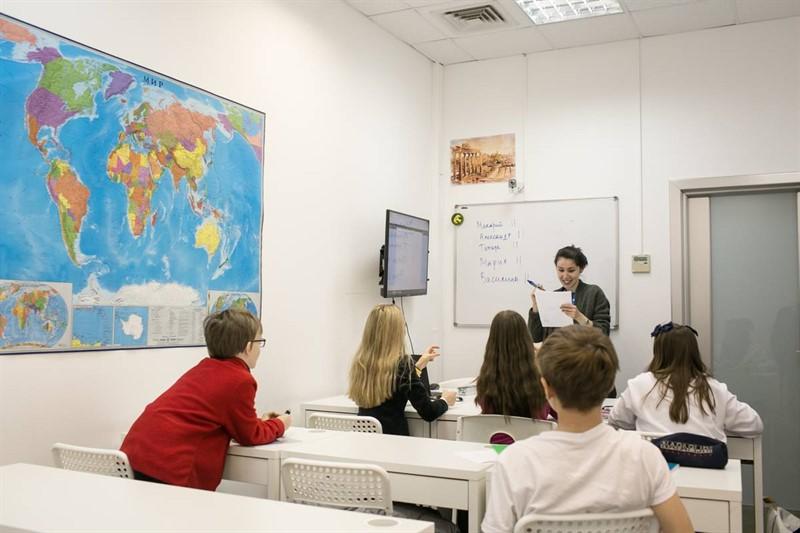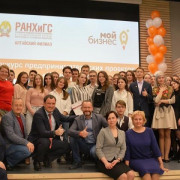Erasmus+
Содержание:
- How does it work?
- Objetivos
- Who can apply?
- Overview
- Previous statistics
- Cele
- Key Actions
- Célkitűzések
- Rapports
- Informes
- Jelentések
- Recent years
- Building on past experience, looking towards the future
- Find out more
- Raporty
- What else should you know?
- What else should you know?
- Financial support
- Find out more
- How to apply
- Academic recognition
- Financing your future is a common problem
- Objectifs
- How do you apply?
- How does it work?
How does it work?
Organisations interested in taking part in the opportunities offered by EMJMDs must form a consortium involving at least three higher education institutions from different Programme countries. A consortium may include additional higher education institutions from Partner or Programme countries.
Organisations in a consortium fall into one of three main categories:
- Applicant/Coordinator — a higher education institution established in a Programme Country responsible for applying for and managing the project, i.e. signing the grant agreement, managing the financial and legal aspects, and coordinating the master degree programme with the other organisations,
- Partners — Master degree-awarding higher education institutions recognised by the relevant authorities of the Programme or Partner Countries, as well as any other organisation actively contributing to the preparation, implementation and evaluation of the EMJMD,
- Associated partner — optional partners who contribute to specific tasks in the implementation of the EMJMD.
The necessary institutional commitment of all the organisations participating in the EMJMD consortium must be in place before the enrolment of the first EMJMD students and must cover all academic, operational, administrative, and financial aspects related to the implementation of the EMJMD.
The successful completion of the study programme must lead to the award of either a joint degree (i.e. one single degree certificate issued on behalf of at least two higher education institutions of the EMJMD consortium) or multiple degrees (i.e. at least two degree certificates issued by two higher education institutions of the consortium).
Objetivos
Erasmus+ contribuye a la Estrategia Europa 2020 para el crecimiento, el empleo, la justicia social y la inclusión, y a los objetivos del marco estratégico para la cooperación europea en el ámbito de la educación y la formación (ET 2020).
Erasmus+ quiere también promover el desarrollo sostenible de los países asociados en el ámbito de la educación superior y contribuir a la realización de los objetivos de la estrategia de la UE para la juventud.
Dentro del programa se plantean los siguientes temas específicos:
- Reducir el desempleo, especialmente entre los jóvenes
- Fomentar la educación de adultos, especialmente en las nuevas competencias y cualificaciones exigidas por el mercado laboral
- Animar a los jóvenes a participar en la vida democrática de Europa
- Apoyar la innovación, la cooperación y las reformas
- Reducir el abandono escolar prematuro
- Promover la cooperación y la movilidad con los países asociados de la UE
Who can apply?
Prospective students must:
- Live in a Programme country
- Have completed a Bachelor-level (or equivalent) qualification before applying
- Have been accepted (before applying) to a full Master programme in another country. The university offering the programme must hold the Erasmus+ Charter of Higher Education
The Erasmus+ Master Loan intends to support full Master studies by Programme country residents in a country other than either their country of residence OR the country where they received their first qualification. Students only studying abroad for part of their Master’s may still qualify for an Erasmus+ grant.
Overview
From 22 October 2019, organisations participating or wishing to participate in the Erasmus+ or European Solidarity Corps actions managed by a National Agency have to manage their organisation’s information through a new organisation registration system. This new system, accessible through the Erasmus+ and European Solidarity Corps platform, makes it easier for most organisations to register and to participate with less information requested.
For more information about the new platform, please see the changes to registration page.
Organisations wanting to participate in Erasmus+ may engage in a number of development and networking activities, including strategic improvement of the professional skills of their staff, organisational capacity building, and creating transnational cooperative partnerships with organisations from other countries in order to produce innovative outputs or exchange best practices.
In addition, organisations facilitate the learning mobility opportunities for students, education staff, trainees, apprentices, volunteers, youth workers and young people.
The benefits for involved organisations include an increased capacity to operate at an international level, improved management methods, access to more funding opportunities and projects, increased ability to prepare, manage, and follow-up projects, as well as a more attractive portfolio of opportunities for learners and staff at participating organisations.
Previous statistics
In July 2014 the European Commission published statistics from the Erasmus programme during the 2012-2013 academic year. They include:
Annex 1: The number of out-bound students by country for studies and placements
Annex 2: Erasmus student mobility: home and destination countries
Annex 3: List of the top 100 higher education institutions receiving Erasmus students from abroad
Annex 4: List of the top 100 higher education institutions sending Erasmus students abroad
Annex 5: Well-known Erasmus alumni — inspiring careers
Annex 6: Number of out-bound Erasmus students per country studying or doing traineeships abroad
Erasmus statistics from 2010 to the present are available in the document library, with statistics from previous years available below.
2011-2012 Zip
2010-2011 Zip
2009-2010 PDF Zip
2008-2009 PDF Zip
2007-2008 PDF Zip
2006-2007 PDF Zip
2005-2006 PDF Zip
2004-2005 PDF Zip
Country statistics from 2000-2012 PDF
Aggregates, time series, and university cooperation Zip
Information about the budget PDF Zip
Erasmus Intensive Language Course PDF Zip
Cele
Zadaniem programu Erasmus+ jest wspieranie realizacji celów strategii „Europa 2020” na rzecz wzrostu gospodarczego, zatrudnienia, sprawiedliwości społecznej i włączenia społecznego, jak również celów strategicznych ram europejskiej współpracy w dziedzinie kształcenia i szkolenia – ET 2020.
Erasmus+ ma również wspierać zrównoważony rozwój swoich partnerów w dziedzinie szkolnictwa wyższego oraz przyczyniać się do osiągnięcia celów strategii UE na rzecz młodzieży.
Program ma na celu m.in.:
- zmniejszanie bezrobocia, w szczególności wśród młodych ludzi
- wspieranie edukacji dorosłych, zwłaszcza w zakresie nowych umiejętności oraz umiejętności wymaganych na rynku pracy
- zachęcanie młodzieży do udziału w procesie demokratycznym
- wspieranie innowacji, współpracy i reform
- ograniczenie zjawiska przedwczesnego kończenia nauki
- wspieranie współpracy i mobilności między UE a krajami partnerskimi.
Key Actions
Key Action 1: Learning mobility of individuals
Key Action 1 aims to encourage the mobility of students, staff, youth workers, and young people. Organisations can arrange to send or receive students and staff to or from participating countries, as well as organise teaching, training, learning activities.
Key Action 2: Innovation and good practices
Key Action 2 is designed to develop the education, training, and youth sectors through five main activities:
- Strategic partnerships to support innovation in the sector as well as joint initiatives to promote cooperation, peer-learning, and the sharing of experience.
- Knowledge Alliances to foster innovation in and through higher education together with businesses, and beyond, contributing to new approaches to teaching and learning, entrepreneurship in education, and the modernisation of higher education systems in Europe.
- Sector Skills Alliances to tackle skills gap and ensure a better alignment of vocational education and training with labour market needs. There are opportunities to modernise VET, exchange knowledge and best practices, encourage working abroad, and increase the recognition of qualifications.
- Capacity-building projects in the field of higher education to support the modernisation, accessibility, and internationalisation of higher education in Partner Countries.
- Capacity-building projects in the field of youth to support the development of youth work, non-formal learning, and volunteer work, as well as promote non-formal learning opportunities with Partner Countries
Key Action 3: Support for policy reform
Key Action 3 aims to increase the participation of young people in democratic life, especially in discussions with policy makers, as well as developing knowledge in the fields of education, training, and youth.
Sport
Designed to develop and implement joint activities to promote sport and physical activity, identify and implement innovative activities in the field of sport, and manage not-for-profit events to increase participation in sport.
Célkitűzések
Az Erasmus+ a növekedést, a foglalkoztatást, a társadalmi méltányosságot és befogadást célzó Európa 2020 stratégia, valamint az ET2020, az oktatás és a képzés terén kialakított uniós stratégiai keretrendszer célkitűzéseinek megvalósításához hivatott hozzájárulni.
Ezenfelül arra törekszik, hogy ösztönözze a partnerországokban a felsőoktatás fenntartható fejlődését, és elősegítse az EU ifjúsági stratégiájában meghatározott célok elérését.
A program egyebek mellett az alábbi konkrét célkitűzések megvalósítását szolgálja:
- A munkanélküliség visszaszorítása, különösen a fiatalok körében
- A felnőttoktatás előmozdítása, különösen az új és a munkaerőpiacon keresett készségek tekintetében
- A fiatalok európai demokratikus szerepvállalásának ösztönzése
- Az innováció, az együttműködés és a reformok támogatása
- Az iskolai lemorzsolódás csökkentése
- Az EU partnerországaival való együttműködés és az EU és a partnerországok közötti mobilitás előmozdítása
Rapports
Le rapport d’évaluation à mi-parcours du programme Erasmus+ (2014-2020), disponible en 23 langues, s’appuie sur divers éléments: les rapports nationaux présentés par les pays participant au programme, les rapports d’évaluation élaborés par un contractant externe indépendant et d’autres études, telles que l’étude d’impact d’Erasmus de 2014, l’expérience acquise dans la gestion du programme, ainsi qu’un million de réponses reçues de toutes les parties intéressées.
La Commission procédera à une évaluation finale du programme lorsque celui-ci prendra fin, en 2020.
Des informations complémentaires sont disponibles dans les rapports d’évaluation du programme Erasmus+.
Vous trouverez d’autres rapports et études relatifs au programme sur le site web de l’Office des publications de l’Union européenne.
Informes
El informe de evaluación intermedia del programa Erasmus+ (2014-2020), disponible en 23 lenguas, se basa en los informes nacionales presentados por los países del programa, los informes de evaluación de un contratista externo, otros estudios contrastados (por ejemplo el estudio de impacto de Erasmus de 2014), la experiencia en la gestión del programa y más de un millón de respuestas de todas las partes interesadas.
En 2020, al finalizar el programa Erasmus+, la Comisión llevará a cabo una evaluación final.
Para más información, consulte los informes de evaluación del programa Erasmus+-
para más informes y estudios sobre el programa Erasmus+, visite la web de la Oficina de Publicaciones de la Unión Europea.
Jelentések
Az Erasmus+ program (2014–2020) félidős értékelése 23 nyelven olvasható. Az értékelés alapjául a következők szolgáltak: a programországok által benyújtott tagállami jelentések, független külső fél által készített értékelő jelentések, egyéb tanulmányok, mint pl. az Erasmus programról készített hatástanulmány (2014), a program irányításával kapcsolatos tapasztalatok és az érdekeltektől kapott több mint egymillió visszajelzés.
Az Erasmus+ program lezárultával, 2020 után, a Bizottság végleges jelentést fog készíteni a programról.
Bővebb információkért lásd az Erasmus+ program értékelő jelentéseit.
Az Európai Unió Kiadóhivatalának weboldalán további jelentések és tanulmányok olvashatók az Erasmus+ programról.
Recent years
The report provides an overview of all activities implemented to date through Erasmus+ 2017 calls. You can find statistics on grants and participants, information on the policy priorities of Erasmus+ and analysis on the programme’s implementation.
The report provides an overview of all activities implemented to date through Erasmus+ 2016 calls. You can find statistics on grants and participants, information on the policy priorities of Erasmus+ and analysis on the programme’s implementation.
The report covers the second year of implementation of Erasmus+, the EU programme for education, training, youth and sport. It aims to give an overview of all the activities implemented so far with regard to the Erasmus+ 2015 calls, planned under the 2015 Erasmus+ Annual Work Programme.
This report covers the first year of implementation of Erasmus+, the EU programme for education, training, youth and sport.
In January 2016, European Commission published figures on the last academic year (2013/14) of the Erasmus programme, which covered higher education mobility and cooperation projects under the former Lifelong Learning programme (2007-2013), part of Erasmus+.
The Regional Impact Analysis of the Erasmus programme builds on the Erasmus Impact Study published in 2014 and looks at how an Erasmus mobility changes a student’s skills and job prospects.
Building on past experience, looking towards the future
The Erasmus+ Programme builds on the achievements of more than 25 years of European programmes in the fields of education, training and youth, covering both an intra-European as well as an international cooperation dimension. Erasmus+ is the result of the integration of the following European programmes implemented by the Commission during the period 2007-2013:
- The Lifelong Learning Programme
- The Youth in Action Programme
- The Erasmus Mundus Programme
- Tempus
- Alfa
- Edulink
- Programmes of cooperation with industrialised countries in the field of higher education
These programmes have been supporting Actions in the fields of higher education (including its international dimension), vocational education and training, school education, adult education and youth (including its international dimension).
Erasmus+ aims at going beyond these programmes, by promoting synergies and cross-fertilisation throughout the different fields of education, training and youth, removing artificial boundaries between the various Actions and project formats, fostering new ideas, attracting new actors from the world of work and civil society and stimulating new forms of cooperation.
It is therefore crucial that the Programme is associated with a strong brand name that is widely recognised. For this reason, all the Actions and activities supported under the Programme will have to be communicated first and foremost by using the «Erasmus+» brand name. However, to help participants and beneficiaries of former programmes to find their way into Erasmus+, for the purpose of communication and dissemination, the following names may be used for those Actions targeting a specific sector, in addition to the common «Erasmus+» brand name, as follows:
- «Erasmus+: Comenius», in relation to the activities of the Programme exclusively related to the field of school education;
- «Erasmus+: Erasmus», in relation to the activities of the Programme exclusively related to the field of higher education and targeting Programme Countries;
- «Erasmus+: Erasmus Mundus», in relation to the Erasmus Mundus Joint Masters Degrees;
- «Erasmus+: Leonardo da Vinci», in relation to the activities of the Programme exclusively related to the field of vocational education and training;
- «Erasmus+: Grundtvig», in relation to the activities of the Programme exclusively related to the field of adult learning;
- «Erasmus+: Youth in Action», in relation to the activities of the Programme exclusively related to the field of youth non-formal and informal learning;
- «Erasmus+: Jean Monnet», in relation to the activities of the Programme exclusively associated with the field of European Union studies;
- «Erasmus+: Sport», in relation to the activities of the Programme exclusively related to the field of sport.
1. REGULATION (EU) No 1288/2013 OF THE EUROPEAN PARLIAMENT AND OF THE COUNCIL of 11 December 2013 establishing ‘Erasmus+’: the Union programme for education, training, youth and sport (http://eur-lex.europa.eu/LexUriServ/LexUriServ.do?uri=OJ:L:2013:347:0050:0073:EN:PDF)
Find out more
Make sure you know your rights when you study or do a traineeship abroad.
Students with further questions about taking part in Erasmus+ should check the frequently asked questions before contacting their institution, their National Agencies for Programme countries, and National Offices for Partner countries (where available).
The ESAA — Erasmus+ Student and Alumni Association offers Erasmus+ students and alumni a dynamic forum for networking, professional development and intercultural exchange.
Doctoral students can also receive EU support for periods of research abroad through Marie Skłodowska-Curie Actions.
Video
Erasmus+: opening doors to new careers with Brechje Schwachofer, Ambassador of the Netherlands to Cyprus, on how her Erasmus exchange helped her to pursue a career in the Dutch Foreign Service
Your browser does not support the video tag.
Raporty
Sprawozdanie z oceny śródokresowej programu Erasmus+ (2014–2020) jest dostępne w 23 językach. Opiera się ono na sprawozdaniach przedłożonych przez kraje uczestniczące w programie, sprawozdaniach z oceny sporządzonych przez niezależnego wykonawcę zewnętrznego oraz innych zweryfikowanych analizach (np. analizie wpływu programu Erasmus z 2014 r.), a także na doświadczeniach w zarządzaniu programem i na ponad milionie odpowiedzi udzielonych przez wszystkie zainteresowane strony.
Po zakończeniu programu Erasmus+ w 2020 r. Komisja przeprowadzi ostateczną ocenę programu.
Więcej informacji na ten temat można znaleźć w sprawozdaniach z oceny programu Erasmus+.
Więcej sprawozdań i opracowań na temat programu Erasmus+ można znaleźć na stronie internetowej Urzędu Publikacji Unii Europejskiej.
What else should you know?
An EMJMD is a study programme of 60, 90, and 120 ECTS credits. This means that it lasts from a minimum of 12 months to a maximum of 24 months. Selected EMJMDs will receive high levels of funding for a period of four consecutive student intakes.
The study period must take place in at least two of the Programme countries represented in the consortium.
Proposals must present a fully developed joint study programme, ready to run and be advertised worldwide immediately after selection.
The proposed Master degrees must be accredited and fully recognised by the relevant authorities in the countries where the HEIs are established.
Participating HEIs from Programme countries need to have a valid Erasmus Charter for Higher Education.
What else should you know?
The study activities offered to students have to be part of the student’s study programme, while the activities offered to student trainees should also be integrated into the trainee’s study programme. Both sending and receiving organisations, as well as the student, must sign a Learning Agreement before the start of the activities, outlining:
- the educational components to be carried out by the student at the receiving institution,
- the educational components to be replaced in the student’s degree at the Sending Institution upon successful completion of the study programme abroad, and
- the rights and obligations of the various parties.
The activities of staff sent abroad should be agreed on, in advance, by both the individual’s sending organisation and the receiving organisation.
As above, all parties to the mobility activity must sign a Mobility Agreement, outlining:
- the target learning outcomes,
- the provisions for formal recognition (for example through ECTS), and
- the rights and obligations of the various parties.
In addition to this, any organisation that has signed the ECHE must also provide the necessary support to participants, including linguistic preparation. For long-term mobility activities beyond two months, the European Commission provides the Online Linguistic Support tool to assess and improve language competences.
Financial support
You may receive an Erasmus+ grant as a contribution to your travel and subsistence costs. It may vary according to differences in living costs between your country and the destination country, the number of students applying for a grant, the distance between countries and the availability of other grants.
If you are moving between Programme countries, check with your National Agency and your sending higher education institution for applicable rates. There is also extra support for students going on a traineeship, students from disadvantaged backgrounds or from outermost Programme countries or regions.
Grant levels and fixed rates for exchanges between Programme and Partner countries are published in theErasmus+ Programme Guide.
Irrespective whether you receive an Erasmus+ grant or are an Erasmus+-zero-grant student, you will sign a grant agreement specifying the duration of your mobility, the amount of the grant and other rights and obligations.
If you are mobile within Programme countries, your sending institution will sign your grant agreement and it will be responsible for making all payments.
If you are moving between Programme and Partner countries, the Programme country institution will sign the grant agreement. Your sending and receiving institutions will decide which one will make your payments.
As an Erasmus+ student, you will be exempted from fees for tuition, registration, examinations, and charges for access to laboratories or libraries at the receiving institution. Small fees for insurance or student union membership may still apply.
You may be eligible for additional grants from your institution, government or other sources. Check the European Funding Guide or the Study Portals.
You may also be eligible to apply for a scholarship for a Joint Master programme, or an EU-guaranteed Master Loan for a Master’s degree of up to two years.
Find out more
The Erasmus+ is the main source of information for these opportunities; detailed information on the award criteria, eligibility criteria, and funding rules can be found in Section B.
Organisations interested in mobility projects between Programme and Partner countries should consult the international credit mobility handbook and the frequently asked questions on international credit mobility.
The National Agencies or, for Partner countries, National Offices (where available) can provide further information, or you can contact the European Commission.
The ESAA — Erasmus+ Student and Alumni Association offers Erasmus+ students and alumni a dynamic forum for networking, professional development and intercultural exchange.
How to apply
Prospective students should apply through the financial institution, the universities or online, submitting the following documentation:
- Certificate of completion of the last degree you have completed prior to the Master degree you are applying for
- A receipt for the enrolment fee OR documentary proof of admission and of the cost of the Master course
Each lending institution will have different terms and conditions – but all institutions will provide interest rates that are significantly lower than commercial rates. Students will therefore need to visit the specific bank or lending institution’s webpage — where they will be able to review specific terms and conditions. These are listed below:
- (outgoing & incoming students from/to Spain)
- Emil Banca Credito Cooperativo (established in the Emilia Romagna region in Italy — outgoing students from Italy)
- QNB Finansbank (outgoing students from Turkey)
- FINS, part of Educativa Group (outgoing students from Romania)
- PBZ — Privredna Banka Zagreb (outgoing students from Croatia)
- University of Luxembourg (incoming students into Luxembourg only)
- University of Cyprus (incoming students into the Republic of Cyprus only)
Academic recognition
Before the study abroad period:
- You, your sending and receiving higher education institutions must sign a Learning Agreement for Studies to ensure a transparent and efficient preparation of the exchange abroad, as well as to agree on how activities successfully completed abroad will be recognised. This document sets out rights and responsibilities of the various parties
- You will receive the Erasmus+ Student Charter, explaining your rights and obligations with respect to your period of study abroad
After the study abroad period:
-
The receiving higher education institution must provide you and your sending institution with a transcript of records confirming that the agreed programme has been completed and acknowledge the results
-
Your higher education institution must recognise the credits (using ECTS credits or an equivalent system) as agreed in the Learning Agreement before the mobility and count them towards your degree, without any further requirements
-
If your higher education institution is in a Programme country, your mobility period should also be recorded in the Diploma Supplement
Read more on the Guidelines on how to use the Learning Agreement for Studies
Financing your future is a common problem
One of the biggest obstacles to students financing their continued education is money, especially if you want to study abroad. Postgraduate degrees – and experience of living and working in another country – are increasingly essential for building and maintaining a competitive CV.
«Without this Erasmus+ loan, I would have simply been unable to start my studies. It had a huge positive impact on my life.»
A Master’s abroad can provide excellent professional, personal and academic experience – the kind of experience that can give an individual a much-needed edge in today’s global marketplace. But continuing your education should not leave you with unmanageable debt after finishing your degree.
If you’ve been accepted to a master’s course abroad — and are looking for a way to navigate tuition and living expenses – an Erasmus+ Master Degree Loan may help.
Objectifs
Erasmus+ contribue à la stratégie Europe 2020 en faveur de la croissance, de l’emploi, de l’équité sociale et de l’inclusion, ainsi qu’aux objectifs du cadre stratégique «Éducation et formation 2020».
Erasmus+ vise également à promouvoir le développement durable des pays partenaires dans le domaine de l’enseignement supérieur et à contribuer aux objectifs de la stratégie de l’UE en faveur de la jeunesse.
Le programme englobe les thématiques suivantes:
- Réduire le chômage, en particulier chez les jeunes
- Promouvoir l’éducation des adultes, notamment dans le domaine des nouvelles compétences et des compétences demandées sur le marché du travail
- Encourager les jeunes à participer à la vie démocratique en Europe
- Soutenir l’innovation, la coopération et les réformes
- Réduire le décrochage scolaire
- Promouvoir la coopération et la mobilité avec les pays partenaires de l’UE
How do you apply?
The application process for mobility projects is managed by the relevant National Agency (NA) on an annual basis. For individual organisations this is the NA in the country where the organisation is based, and for a consortium this is the NA where the consortium coordinator is based.
A call for proposals for the ECHE is held on an annual basis, and is managed by the Education, Audiovisual and Culture Executive Agency. The award of an ECHE is valid for the duration of the programme.
A call for consortium accreditation is published on an annual basis by the National Agencies. A consortium accreditation is valid for three years. Organisations can request accreditation and grants at the same time.
How does it work?
Organisations wanting to take part in these opportunities can either apply as an individual higher education institution, or as part of a «national mobility consortium», a group of organisations managed by a single coordinating organisation.
These organisations fall into one or more of the four main categories:
- Applicant Organisations — responsible for applying for and managing the project, but can also act as a sending organisation
- Sending Organisations — in charge of selecting students/staff to send abroad or to manage incoming students and staff from partner countries, as well as invited staff from enterprises,
- Receiving Organisations — responsible for receiving students/staff from abroad and offering a study/traineeship programme,
- Intermediary Organisations — as a partner in a mobility consortium, intermediaries can be involved in supporting and facilitating the work of a consortium.
Higher education institutions established in a Programme country must hold an Erasmus Charter for Higher Education (ECHE) whether applying individually or as part of a consortium.
Consortia intending to take part must also hold a Mobility Consortium Accreditation.
Other organisations from Programme countries can also participate, but do not need an ECHE.
Although organisations from Partner countries can participate in mobility activities, Partner country higher education institutions are not eligible for an ECHE. Instead, they commit themselves to the principles of the charter and make the support they intend to offer to participants clear in the Inter-Institutional Agreement.
After receiving an ECHE and/or mobility consortium accreditation, the applicant organisations can apply for EU funding.










